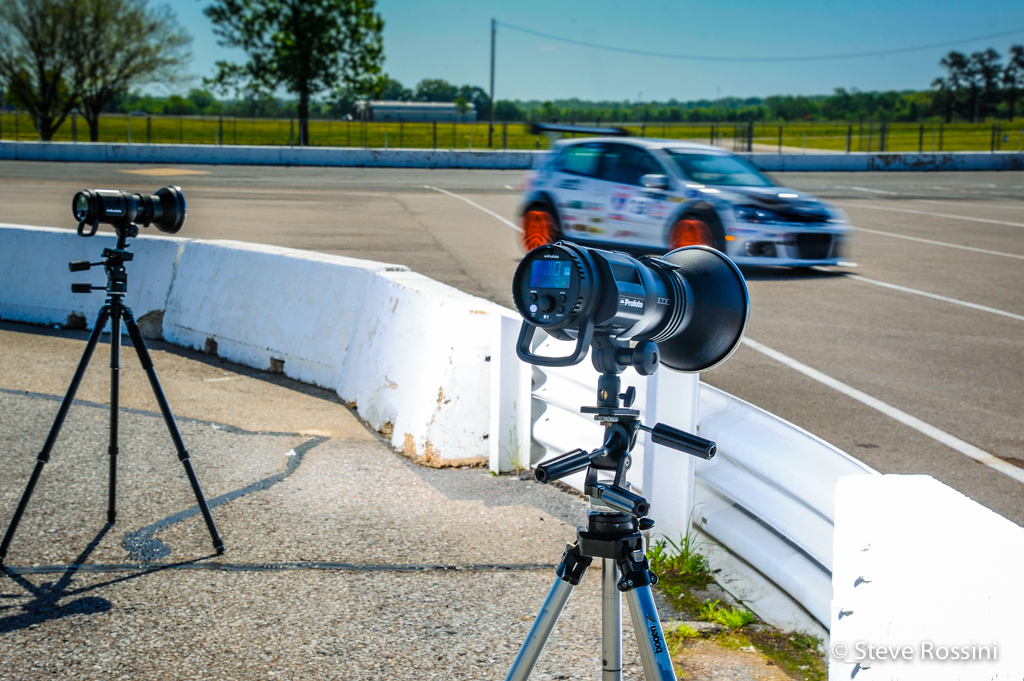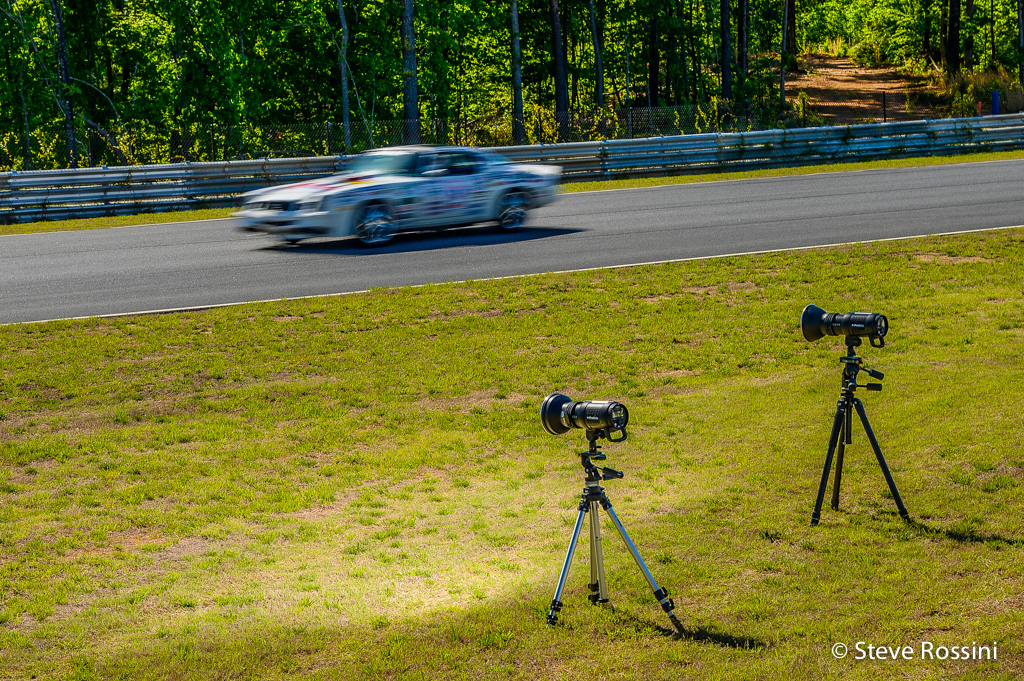Brock Yates’ One Lap of America with the Profoto B1

Profoto B1’s on track at Memphis Motorspeedway, Memphis, TN
I have been an automotive track and studio photographer for the last 20 plus years.The trip is a weeklong, 3,400 mile trek around the country in the Brock Yates’ One Lap of America. This annual event, my 12thyear covering it, is the original, updated version of the Cannonball Run. Today’s event involves driving from racetrack to racetrack with competitive driving only on the track. These cars are all high performance cars on a tight time schedule. And I, as the photographer, have no influence on the schedule. My job is documenting this event at 10 different tracks, over 8 days, and covering 15 states. We (two photographers) need to decide the shooting location at every track, many I have never been to. Since I shoot mainly the morning session, lighting is a major factor and I cannot wait for the sun to be in the best location. There are usually many good shooting locations available, but if the sun is in the wrong place, I need to find a new shooting location.

Profoto B1’s on track at the Atlanta Motorsports Park, Atlanta, GA
Capture Integration kindly offered support; “If you need anything for your trip, just let us know”. I was offered the Profoto B1 500 AirTTL heads and since I exclusively use Nikon, I needed to use the standard Air Remote since the TTL version was not available. I thought the Profoto B1’s would give me the opportunity to extend the shooting locations when the sun creates a back lit situation. The first shoot in South Bend, Indiana, was on opening day with the B1s used for the formal team shot. I needed to shoot 60 teams, drivers and cars, in less than 2 hours. Using the white registration tent as an umbrella, the B1s had no problem lighting up the interior subjects and still properly balance the interior and daylight exterior. With the strobes set to 9, with 10 the highest output, I had plenty of power to capture multiple exposures of every team, with spare power in reserve.
We traveled 600 miles overnight to the next location at Memphis Speedway (Memphis, Tennessee). Photographers are not given enough time to drive the track, find a shooting location plus test shots before the track is hot. I found one location to shoot that lit the cars from the side, but soon abandoned this location for a more dramatic rear lit shot and to see if the B1s could light the dark side of a rear lit car on track. With the sun directly behind the cars and with only moments to spare, since the first teams were already on track, the B1s were set up and I was shooting in moments. I was impressed. From storage case, to tripod, power on, attached the transmitter, aim the strobes, set the camera exposure, strobes on high, the first shot was a success.
To balance the scene, I exposed off the background then I needed the strobes to fill in the front of the car. They needed to be set to high, 10 output, which limited me to approximately 200 shots. The wireless transmitter made it easy to adjust the strobes as the light changed throughout the morning. With 60 cars, and four passes for each car, each shot was important and I was able to capture all of the morning session cars and walked away with the shots I wanted, a rear lit car with the front facing side well lit even enough to even see the driver inside.
This brings up an important issue. I needed to make it safe for the drivers, and remain aware not to point the strobes towards them in anyway that would interfere with their driving. These are cars driving at very fast speeds, and safety is a first and foremost priority. By placing the strobes in a safe location and directing the lights away from their field of view, I was able to light the car and not disturb the driver.
It is imperative to give the illusion of speed for these photos to work and to express the action of the moment. A car on track that is shot at a high shutter speed will make the car look like it is parked on the track. By using a slow shutter speed (1/60 to 1/100) and panning with the car on track you can capture the car in action and create a dynamic image. Car will appear in focus, with the wheels and background blurred. The B1s compensated for the exposure and also helped freeze the action.
The final location I used the B1s was after another 600 mile overnight drive to the Atlanta Motorsport Park (Atlanta, Georgia). My location of choice was again rear lit, morning sun, which detailed the wooded area behind the track and also allowed the sun to fill the interior of the car with light. I had previously used SB strobes to light a similar scene with marginal success at best. The cars were again on track as the strobes were quickly set up, again with no problem. With the strobes set to high power, the strobes handled the scene and delivered the desired images.
With the assistance of Anthony Festa from Capture Integration (and of course Profoto), this year’s event was a success. These are incredible strobes, powerful and very versatile, easy to use, learn and incredibly fast to set up. I had no prior use of these strobes except for a few online tutorial reviews, and I was capable of using them on locations for images I always wanted to capture.
Equipment:
- Profoto B1 500 AirTTL strobes with Air Remote
- Nikon D700
- Nikon D800
- Nikon 24-120mm f/4G ED VR
- Nikon 70-200mm f/2.8G ED VR II
Steve Rossini
Highland Design Studio
HighlandDesignStuido.com
Spencerport, New York